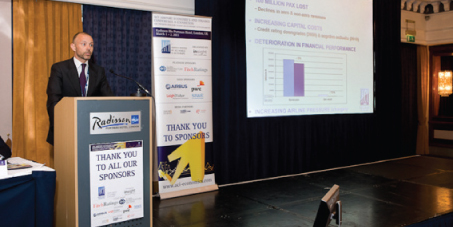
Olivier Jankovec, Director General, ACI EUROPE, explained that 2010 saw a return to growth in Europe, with a +4.2% increase in passengers and a +18.7% increase in freight. However, that growth was tempered by external shocks such as the volcanic ash crisis, industrial action and extreme weather.
The conference provided a platform for a broad range of industry stakeholders to discuss the key issues affecting the long-term financial performance of airports. It attracted attendees from all sectors of the industry, including airport CEOs, CFOs, investors, regulators and academics.
Figures for 2010 show a +6% rise in passenger traffic worldwide, with an increase in both domestic and international markets. Angela Gittens, Director General, ACI WORLD, explained, however, that North America traffic growth is down by -7% compared with 2007. “We have winners and losers within the mature markets and not all destinations in emerging markets share the strongest rates of growth, but the global averages are robust and the mood is positive,” she said. “On the cargo side of the business, in 2010 we witnessed rapid surges in traffic, then a slowdown and now stabilisation with international freight traffic levelling out and showing signs of real growth. This is an indicator of a healthier global economic environment and rising productivity in new markets.”
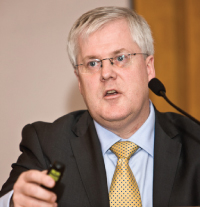
Ray Gray, CFO, Dublin Airport Authority, delivered an insightful perspective on the financial implications of abrupt change.
2009 was, as Olivier Jankovec, Director General, ACI EUROPE, put it an “annus horribilis”, in which 100 million passengers were lost and both aeronautical and non-aeronautical revenues declined. It was a year punctuated by increasing capital costs, deterioration in financial performance and increasing airline pressure in terms of charges. 2010 saw a return to growth in Europe, with a +4.2% increase in passengers and a +18.7% increase in freight. However, that growth was tempered by external shocks such as the volcanic ash crisis, industrial action and extreme weather.
Looking ahead, Jankovec explained that ACI EUROPE has identified four key challenges: Capacity, Environment, Connectivity and Security. In terms of capacity, air traffic will double by 2030. “There will be a 40% capacity increase, but 10% of demand will not be accommodated,” he said.
On the environment, regulators and industry are taking action. Aviation will be part of the EU Emissions Trading Scheme from 2012 and industry commitment is evident through ACI EUROPE’s Airport Carbon Accreditation, in which 43 airports in 18 countries are already participating, with a current CO2 reduction of 619,881 tonnes. But Jankovec stressed that “we need clear direction at EU level on environmental objectives”.
The scale of the security challenge is starkly highlighted by the fact that security now accounts for 29% of airport operating costs; that figure was only 5-8% pre-9/11. “Security is an everyday headache operationally and financially. Airports will have to deploy new technology, which will be costly. The airport of the future will have seamless, integrated processes,” said Jankovec.
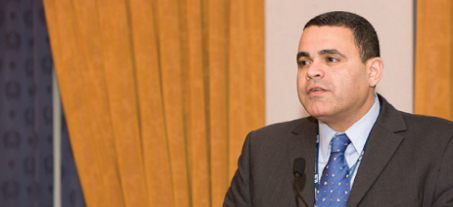
Dr Waleed Youssef, Chief Strategy Officer, TAV Airports Holding and Chair, ACI Economics Committee, provided an overview of TAV Airports’ dynamic growth. It currently operates 10 airports, which handled a total of 47.6 million passengers in 2010 – an increase of +13% year-on-year.
Future growth
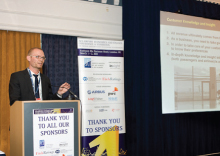
Jeff Salter, Director, Copenhagen Airports: “Passengers are the source of all revenue – an airport’s interests are aligned with the passengers’ interests. Customer knowledge and insight is a prerequisite for developing an airport in a customer-focused way. The passenger perspective is a natural and integrated part of regulatory affairs.”
A high-level panel addressed the ‘State of the Industry’, with participation from Michael McGhee, Partner, Global Infrastructure Partners (GIP); Colin Matthews, CEO, BAA; Arturo Recio, Managing Director, Global Head of Infrastructure, HSBC; and Tim Coombs, Managing Director, Aviation Economics. Coombs said that the outlook for 2011 versus 2010 is favourable, with growth on average of 8.5% in the first three months of 2011. He added that there are potential further increases in aviation taxes and fuel surcharges on the horizon.
Providing a UK perspective, McGhee expects traffic recovery for the next year or two, but is more pessimistic after that. “Growth in the UK faces a few challenges. Growth will be slower than historically due to the need to pay government and private debt,” he contended.
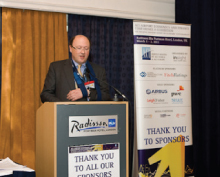
Michael McGhee, Partner, Global Infrastructure Partners, provided a UK perspective, explaining that he expects traffic recovery for the next year or two, but is more pessimistic after that.
Emerging markets lead the way in terms of future growth, according to Recio, who offered the view that there will be an increasing trend towards private sector investment in airports. “After one of the most challenging times in aviation history, the outlook now appears brighter,” he said.
The conference covered myriad subjects, including Regulatory Affairs, Airport Ownership, Airport Revenue Growth and Airport Performance. Iain Osborne, Group Director, Regulatory Policy, CAA UK, stressed the need for all players on the airport campus to work together well, stating that “effective relationships are key to delivery service quality”. “Pricing transparency is an issue for both airlines and airports individually, but the relationship between the two is important,” he said.
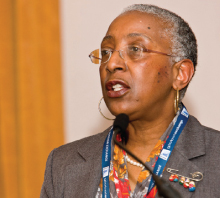
Angela Gittens, Director General, ACI WORLD: “We have winners and losers within the mature markets and not all destinations in emerging markets share the strongest rates of growth, but the global averages are robust and the mood is positive.”
The Copenhagen Airports story is particularly interesting. The strategy at CPH is to facilitate choice for passengers and create infrastructure dedicated to both low-cost and full-service carriers. Jeff Salter, Director of Sales Excellence & Public Accounts at Copenhagen Airports and Chair of the ACI EUROPE Economics Committee, explained that there is a dual airport strategy, with the low-cost pier CPH Go opening in October 2010 with a lower airport charge, operating side-by-side with the full-service product. He offered three key points: “Passengers are the source of all revenue – an airport’s interests are aligned with the passengers’ interests. Customer knowledge and insight is a prerequisite for developing an airport in a customer-focused way. The passenger perspective is a natural and integrated part of regulatory affairs.”
Responding to change
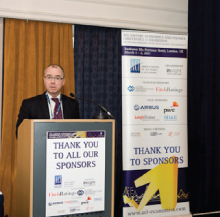
Iain Osborne, Group Director (designated), Regulatory Policy, CAA UK, stressed the need for all players on the airport campus to work together well, stating that “effective relationships are key to delivering service quality”.
A key theme of the conference was that change is a constant in the aviation industry, and there was a consensus that adaptation, innovation and preparedness for change are essential. Ray Gray, CFO, Dublin Airport Authority, delivered an insightful perspective on the financial implications of abrupt change. He identified three stages of managing change – Positioning, Responding and Repositioning. Positioning takes place pre-event and involves such issues as liquidity and funding, capex timing and risk diversification; Responding means taking evasive action and factors such as reassessing capex plans, reducing costs and revenue protection and recovery; Repositioning involves step-changing the business – facility transformation, quality of the retail offering, focus on the passenger experience and efficiency in operations and costs are all important. Dublin Airport Authority implemented a cost reduction programme in 2009, during which it negotiated in partnership with unions and staff. Results include a 20% reduction in legacy staff through voluntary severance and contracts not being renewed, as well as substantial pay adjustments, with pay cuts of up to 12% – the average being 5.5% – and a further 18-month pay freeze.
Dr Waleed Youssef, Chief Strategy Officer, TAV Airports Holding and Chair, ACI Economics Committee, provided an overview of TAV Airports’ dynamic growth. It currently operates 10 airports, which handled a total of 47.6 million passengers in 2010 – an increase of +13% year-on-year. He emphasised the strength of the Turkish aviation market – there were 29 million foreign visitors in 2010, for example. “Turkey has the second largest population in Europe (72 million), the sixth largest economy in Europe and the 16th largest in the world,” he said.
Mature market growth
GDP growth in the major aviation markets bodes well for the global economy and air transport demand. China and Brazil remain the fastest growing economies, while growth in the major mature markets of Germany, the UK, Spain and Japan has further accelerated. The consensus following the two-day event was that, while the worst of the economic crisis appears to be over, challenges remain, not least continuing tight financial markets, sovereign debt crises and rising oil prices. It was widely agreed that airports must build on the renewed confidence that is reflected in the return to traffic growth and strive to strengthen their economic vitality.







